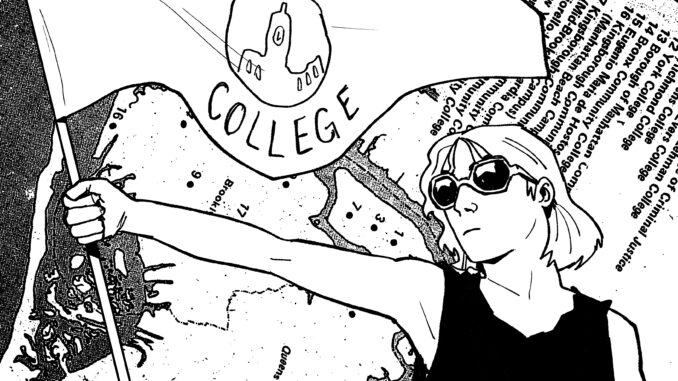
By Shea Stevenson
CUNY schools were free when the first of them (City College, go figure) was established in 1847. To put that into perspective, the founding of City College is closer to the Revolutionary War than it is to 2023. It, along with a handful of other public schools in New York City, would later get melted down into the massive university you presumably attend if you’re reading this.
But when the city made CUNY in 1961, they also did something funny. The free public schools were both in need of investment and expecting a massive new wave of students, so then NY Governor Nelson Rockefeller formed a committee to see what should be done about it. The committee suggested consolidating the schools. The legislature did that, but also (in the same law) took it upon themselves to repeal the clause that mandated the schools remain tuition-free. It added instead a financial aid program that applied to both public and private schools.
Yet CUNY did not stop offering free tuition in 1961. It didn’t cave in ‘62, ‘63, ‘68, or ‘69. It did not cave in the early 70s, nor in the mid-70s. They held on for fifteen years. It took until 1976, the absolute pit of New York City’s bankruptcy, for tuition to be charged to full-time students at this university.
It’s easy to imagine that urban idealists of the 1840s who lived on the cusp of the Civil War, half a century before there’d be a bridge between Brooklyn and Manhattan, when nothing on the island was taller than Trinity Church, who believed that this city might grow to become anything, would dedicate a college to an evident social good and make it free. It’s hard for me to imagine that at the tipping point of the emerging global capitalist economy, the bureaucracy of CUNY didn’t institute tuition payments even when they could have for fifteen consecutive years.
CUNY was strangled of its budget from the beginning. In 1975, New York City handed the reins to a new organization, the Emergency Financial Control Board (they’ve since dropped the “Emergency” part of the name), which gutted municipal spending of all kinds, including the already bleeding CUNY. But even then, they didn’t instate tuition. The killing blow was another major cut in ‘76.
What’s hard for me to imagine is my college putting up that kind of fight now. Not only for free tuition, but anything. We couldn’t stop the tuition from getting higher, let alone lower it.
Clubs at Brooklyn College seem to be perpetually above a state fair dunk tank, where unless we all smile really hard and say over and over that they are useful additions to the campus, someone will flip the switch and the club will go under. At this very moment, the one in the spotlight is the Women’s Center (go Women’s Center). Last year it was the radio station. We’re lucky that you can even be reading this in print after COVID.
When people bandy about terms like “unrealistic” regarding city budgets and schooling, it’s useful to recognize the breadth of precedent human accomplishment. In 1974, the Newt Davidson Collective at CUNY published “Crisis at CUNY,” which starts: “The City University of New York is as immense as one of the pyramids. It consists of ten four-year colleges, eight two-year colleges, a graduate center, and an affiliated medical school. It has over a quarter of a million students, over fifteen thousand faculty, and more than a thousand administrators […].”
And that was when it was still free. These schools are the product of a public works project that is hardly conceivable in scale and effect. It is often infuriating and obtuse but it’s also an idea with tangible power. CUNY deserves to be free, it deserves administrators who will fight to make it free, it deserves legislation that protects its funding, and it deserves to run itself like a school and not a business. More than the abstract idea of CUNY, its students deserve free college. Its adjuncts deserve to get paid.
Here’s hoping that the “New Deal for CUNY,” a bill going through the New York State Senate as you read this, goes all the way. There are student organizations like the Brooklyn College chapter of the Young Democratic Socialists of America (YDSA) that organize to that effect, and there’ll be protests and petitions all throughout the year for all manners of smaller causes. The actors and writers are striking, big companies are unionizing all over the country, UPS almost went on strike (but got their deal just before it happened). It all adds up. Let’s get our share.
